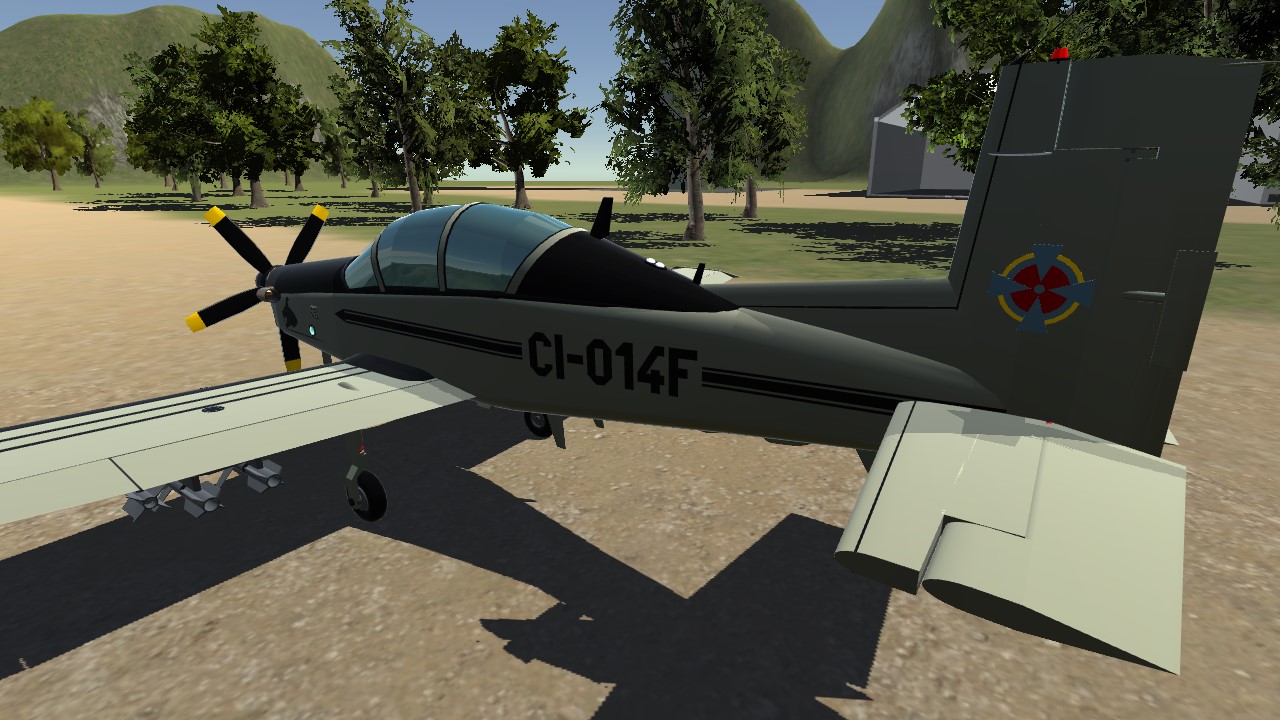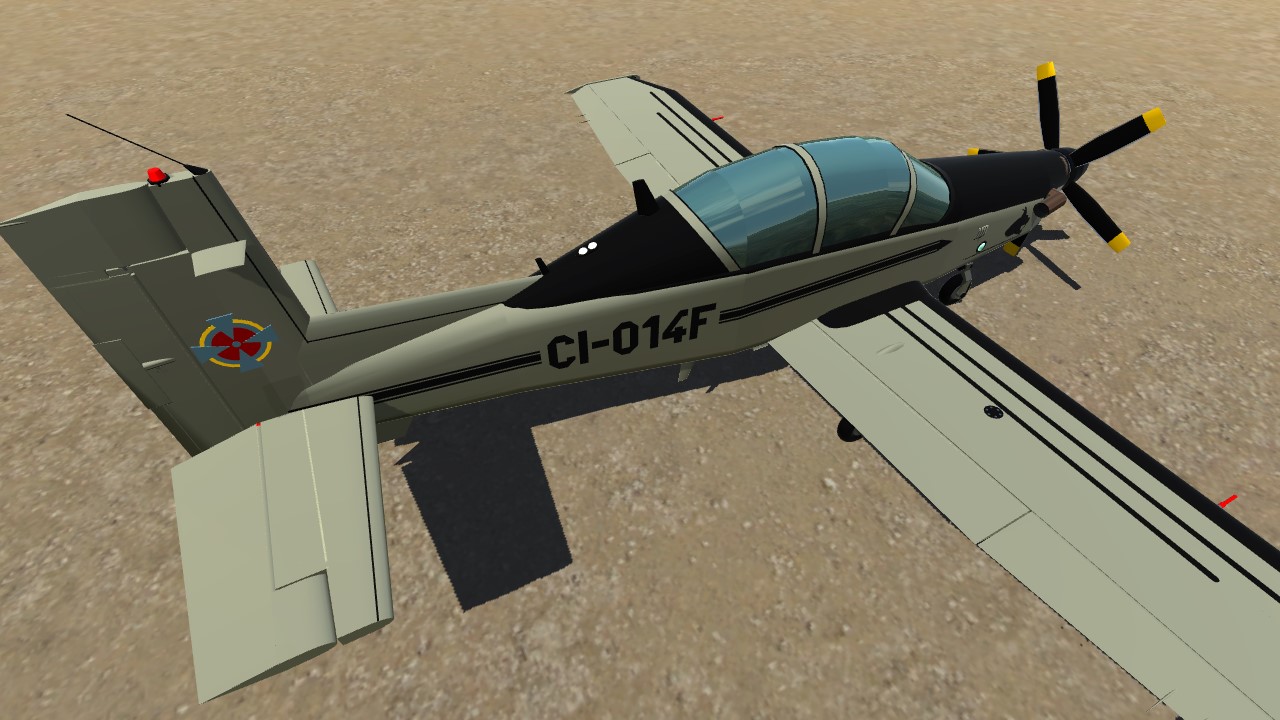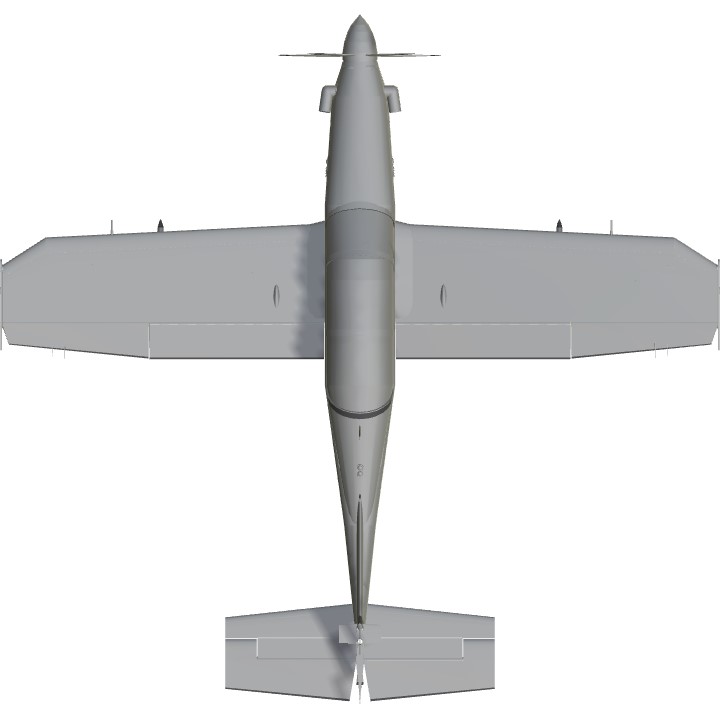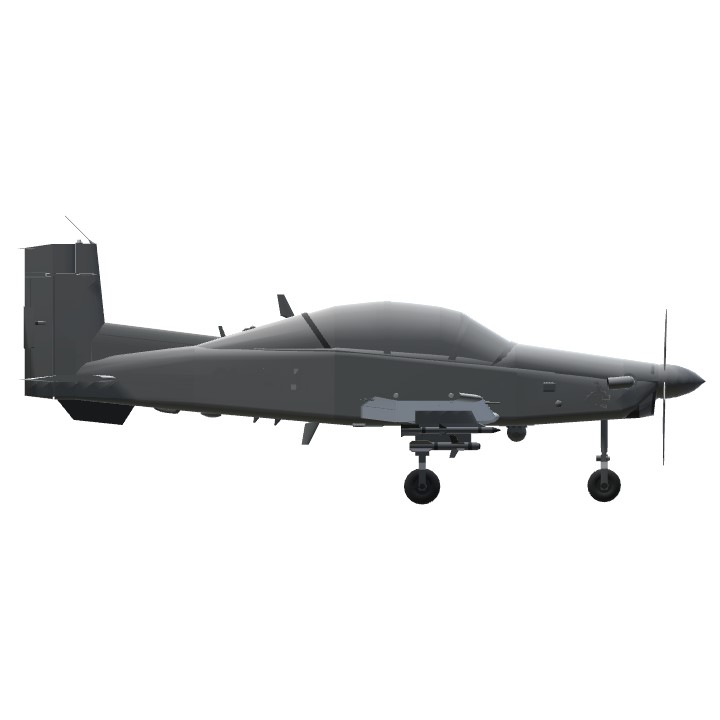Having the same designation as T-6 Texan is a coincidence. Most of the
inspiration for this plane comes from Utva Kobac
T-6 Lynx is a plane developed by the M.Corp as a step towards standardising the M.Corp Air Force training program. It replaced all other prop-powered trainers in M.Corp service.

Design
M.Corp T-6 Lynx was developed in order to standardise training of pilots in the M.Corp Air Force. Having various basic and aerobatic trainers made maintenance and logistics complicated. Also, pilots at different flight schools received different training for the same job.
Lynx is a turboprop-powered, twin-seat, low wing, armed training, reconnaissance, and COIN aircraft. It's powered by a 1300shp turbine, developing speed of 450km/h at sea level, and 530km/h at 2000m. It has high maneuverability, making it ideal for aerobatic training of pilots.
Although T-6 doesn't have any integrated armament, it can carry wide variety of weapons and other equipment on six underwing hardpoints. Having open software infrastructure, it can be adapted to effectively use any weapon that can fit under its wings. That includes gun pods, rocket pods, air-to-ground missiles, heat seeking air-to-air missiles, and bombs. It can also carry COMINT and other EW equipment.
Lynx is equipped with data link, feeding the aircraft with target data from other units, or providing image and real time video from its sensors to other units.
Wings of this aircraft feature swept leading edge, with rear edge being straight for the first half, and swept forward in the outer half. Wings contain main fuel tanks and landing gear, and have provisions for mounting wingtip fuel tanks.
Fuselage is usual for an aircraft of this class. Engine is placed in the nose, with a cockpit in tandem arrangement under the large canopy behind it. Tail is of a conventional layout, with a single tail fin, and horizontal stabilizers mounted onto the fuselage. It features yaw and pitch trim. Pitch trim is particularly powerful due to wide range of operating speeds and payloads. A large air brake is mounted under the fuselage, aft of the wheel wells.
Landing gear is of a conventional tricycle layout, fully retractable. Main gear is housed in the wings, and wheels retract into the fuselage under the cockpit. Nose gear is steerable and retracts under the engine. Gear is very sturdy, allowing landing on unprepared runways.
About this example

This example of M.Corp T-6 Lynx belongs to 4th Light Attack Squadron, dedicated to protecting the borders from insurgency. It is armed with 2x2 M.Corp Pixie missiles and 2x heat seeking air to air missiles for shooting down helicopters.
Notes
- This plane has performance similar to the real one. That means you can't just throttle up and start doing aerobatics as soon as the wheels leave the ground. You might get it to fly, but it won't be as pleasurable. Follow the takeoff procedure:
- Lower flaps to 50%;
- Throttle to full;
- "Mouse as joystick"/on-screen controls;
- Pull up with around 70% of pitch at around 200km/h (124mph);
- Retract gear;
- When gear is retracted, disable "Mouse as joystick" / let on-screen controls;
- Slowly retract flaps;
- Keep the plane level with trim until it reaches top speed at selected altitude.
And landing procedure:
- Align with the runway at a reasonable distance;
- Throttle down to 35% and trim down as needed, flaps down 20-25%;
- Activate Ag1 and Ag2 to jettison unspent ordinance and ordinance racks (optional)
- When speed drops to around 160km/h (100mph), throttle up to 45-50% and deploy flaps to 80%;
- Keep the speed so that you have smooth descent at AoA = +3°-5°.
Do understand that plane will bleed speed in climbs and turns, and gain speed in dives and straight runs. You will have to adjust trim to any change of speed. You will also have to change trim to compensate for spent ordinance.
Instructions
- Standard flight controls;
- Ag1 to jettison air-to-air missiles;
- Ag2 to jettison air-to-ground missiles.
Enjoy, and please leave feedback
Specifications
General Characteristics
- Successors 5 airplane(s) +112 bonus
- Created On Windows
- Wingspan 42.2ft (12.9m)
- Length 40.5ft (12.3m)
- Height 16.9ft (5.1m)
- Empty Weight 4,275lbs (1,939kg)
- Loaded Weight 8,213lbs (3,725kg)
Performance
- Horse Power/Weight Ratio 0.133
- Wing Loading 13.8lbs/ft2 (67.2kg/m2)
- Wing Area 596.5ft2 (55.4m2)
- Drag Points 9556
Parts
- Number of Parts 464
- Control Surfaces 0
- Performance Cost 1,482







@KfcGaming this is what a generic trainer aircraft looks like. Pilatus PC-21, Embraer Super Tucano, Utva Kobac, and a few others look a lot like this.
I will try to post an aircraft like this tomorrow
The cockpit looked like cessna a little bit but the landing gear looked very complex
I know there's a aircraft like this outside a building it is a statue and above it the name was written but I didn't found it on web its name X-3214 16 and the web showed another things
@GeneralPatrick2 I wasn't looking at blueprints of either one. I just wanted to make a plane somewhat like Utva Kobac, so I made a generic turboprop trainer.
Honestly I think it looks more like a Super Tucano than an Utva Kobac.
And le funniest thing is that the Texan is also a trainer
@chancey21 because you can set an angle. Try playing with the angle option on inlets/flaps.
But why use inlets instead of fuselages?
@EternalDarkness good point.
@Davisplanez trainers are my favorite kind of aircraft. I guess that's why they always turn out so well :)
you really like your trainers...
Clearly! @EternalDarkness
@TTHHSSSS thank you. I spent a lot of time on performance.
Flies very nicely
I see. It’s still cool@EternalDarkness
@Tang0five they are actually inlets. I have been using the same trick for bows of my ships since the fuselage inlets came to SP. Make the width of the open part 0, and tilt it sideways (so that when you angle it, you get swept trailing edge for the wing). Thank you for feedback.
Realistic handling and flies nicely too! @EternalDarkness I must say I’m envious of those control surfaces! How do you get fuselage pieces to do that??!
@Tang0five I'm glad you like it. Did you fly it? Did you like realistic behaviour? I need as much feedback on that as possible, so I know if I should keep pushing that, or go with arcade like handling.
Very neat!
@SperioTech Bogdan's post inspired me to make my own trainer. But we took different approaches and different planes for inspiration.
@Kimcotupan15 @Pilotmario @Tully2001 thanks
This reminds me of BogdanX’s post @EternalDarkness
Looks nice. I dig it.
Reminds me of the A-29 Super Tucano, other than that it looks so realistic and beautiful (than my crush XD)